NCERT Solutions for Class 10 Economics Chapter 3 – Money and Credit
NCERT Solutions for Class 10 Economics Chapter 3 – Money and Credit are essential for understanding the role of money and banking in the economy as per the CBSE curriculum. These well-structured answers help students grasp topics like the modern form of money, credit, formal and informal lending, and the role of the Reserve Bank of India. Designed as per the latest syllabus, these solutions strengthen conceptual clarity and improve exam preparation. Ideal for revision and practice, they promote financial literacy and critical thinking, making them a valuable study tool for scoring well in Class 10 Social Science exams.
NCERT Solutions For Class 10 Economics – Money and Credit – Exercise Images
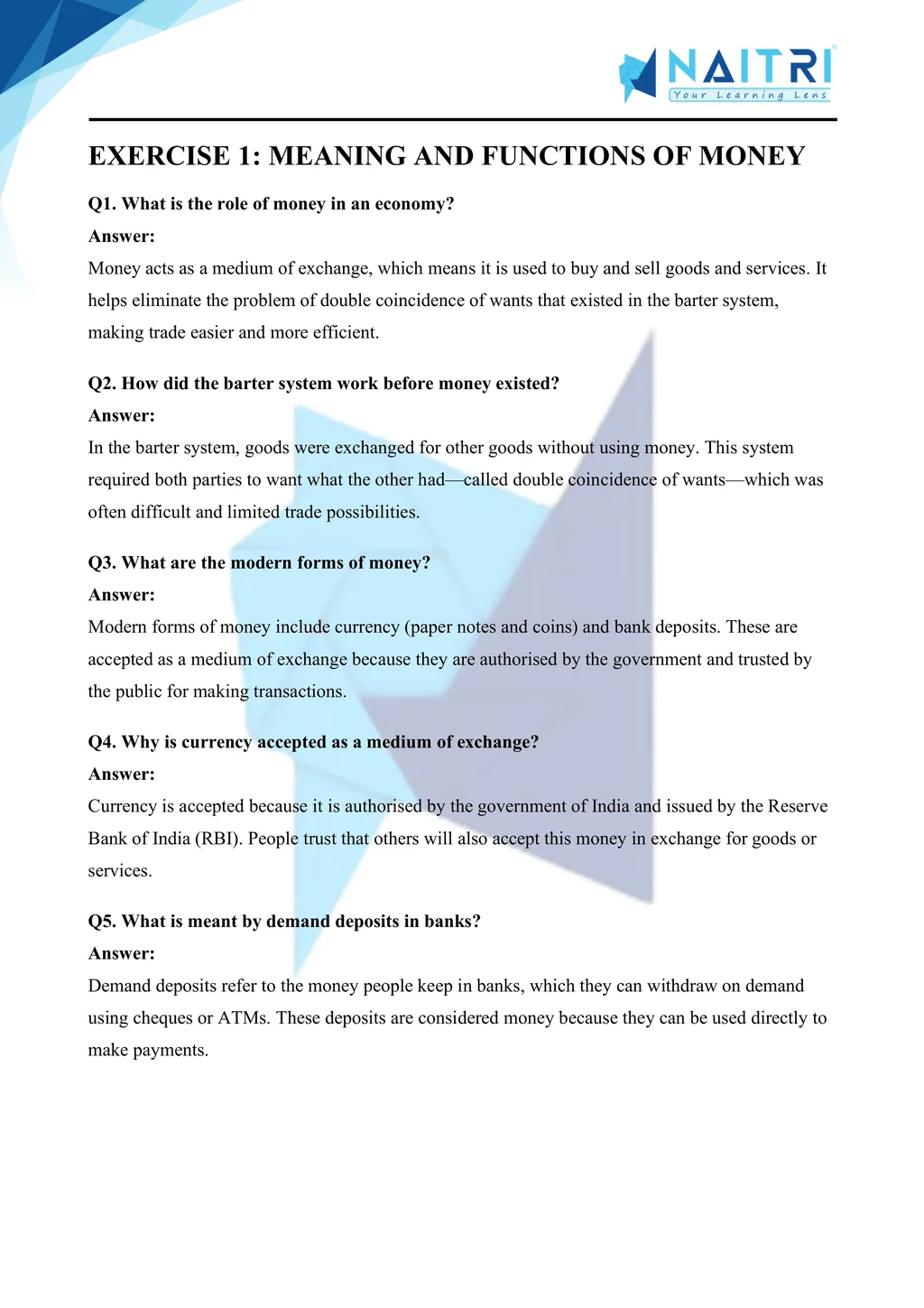
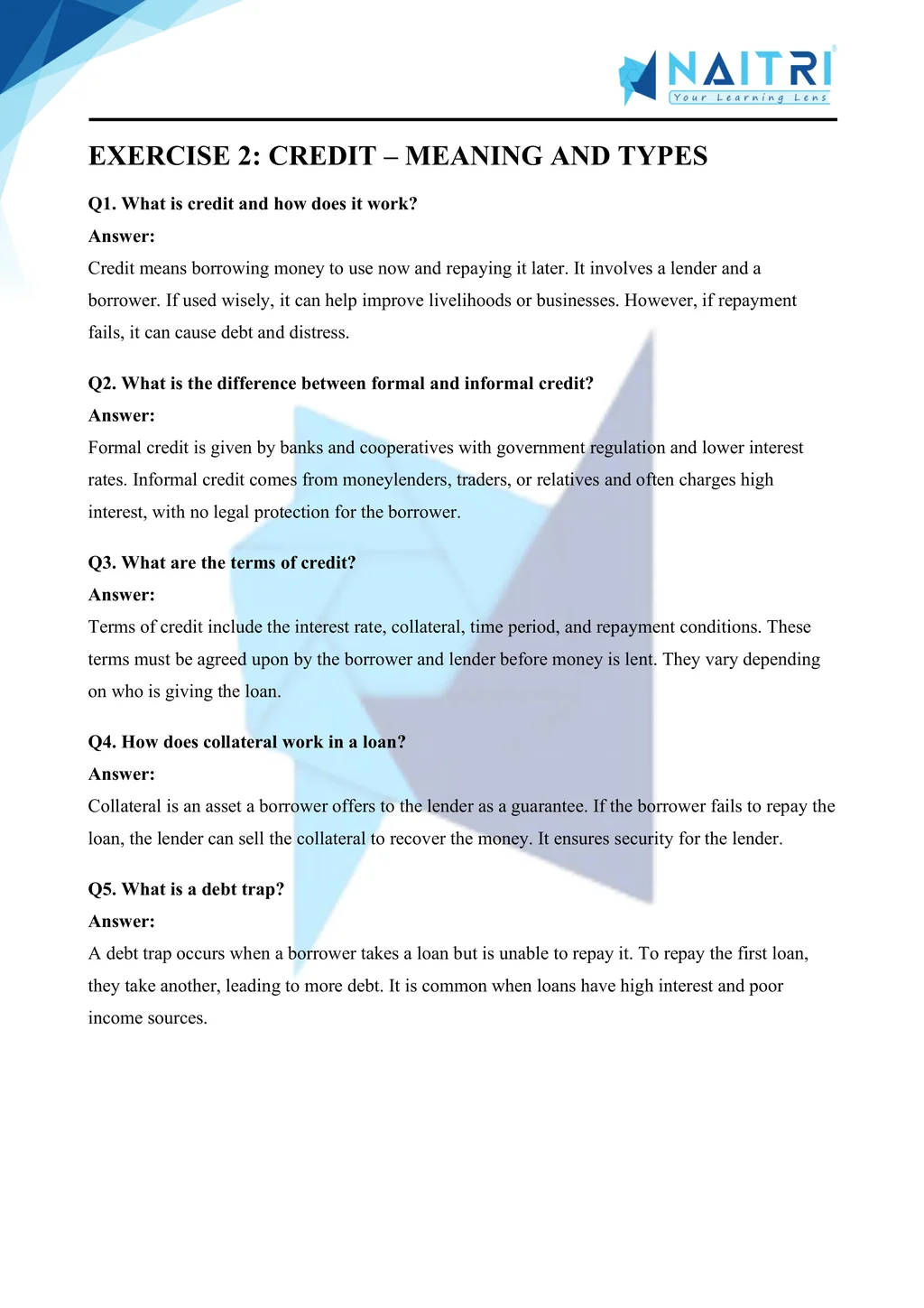
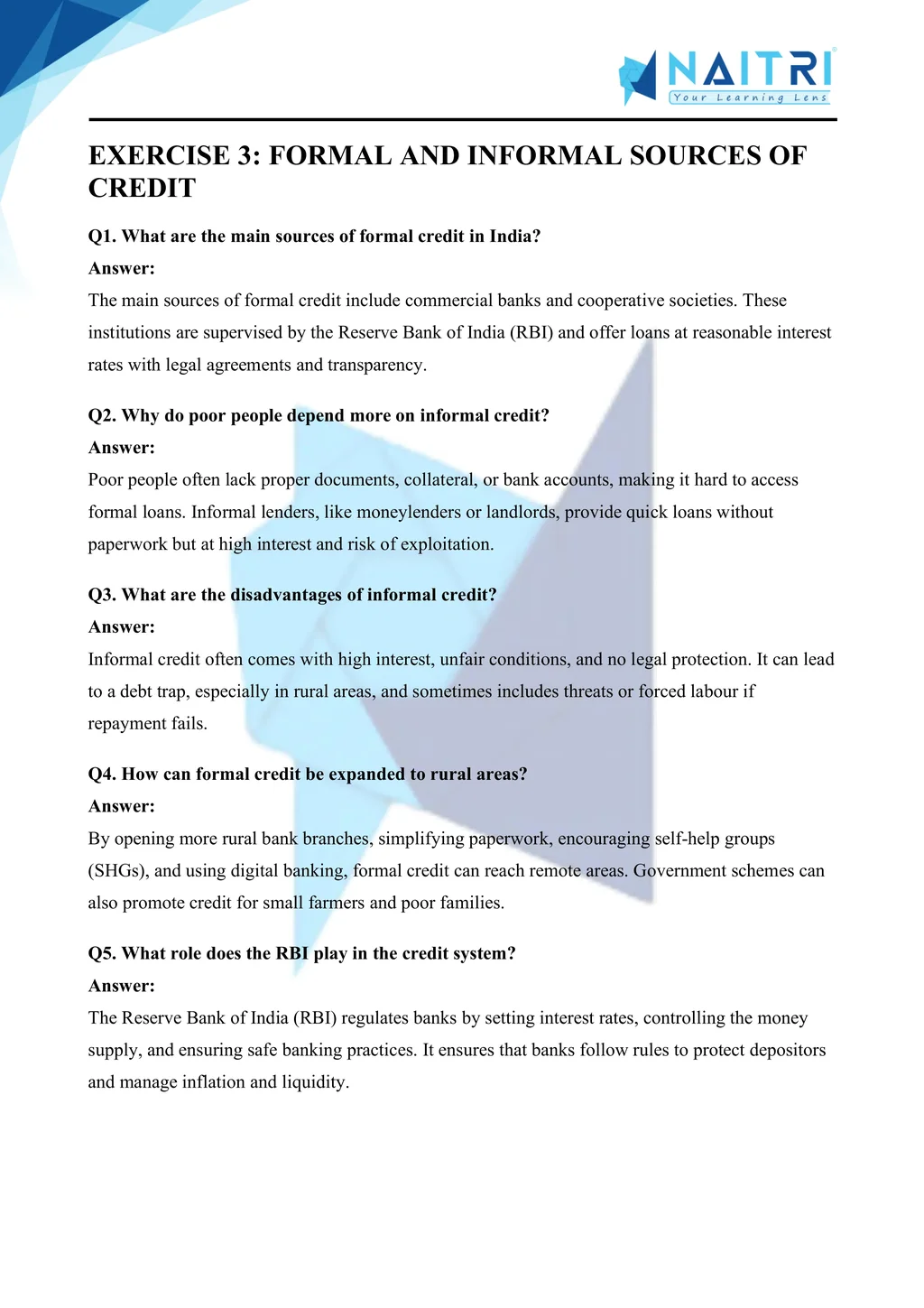
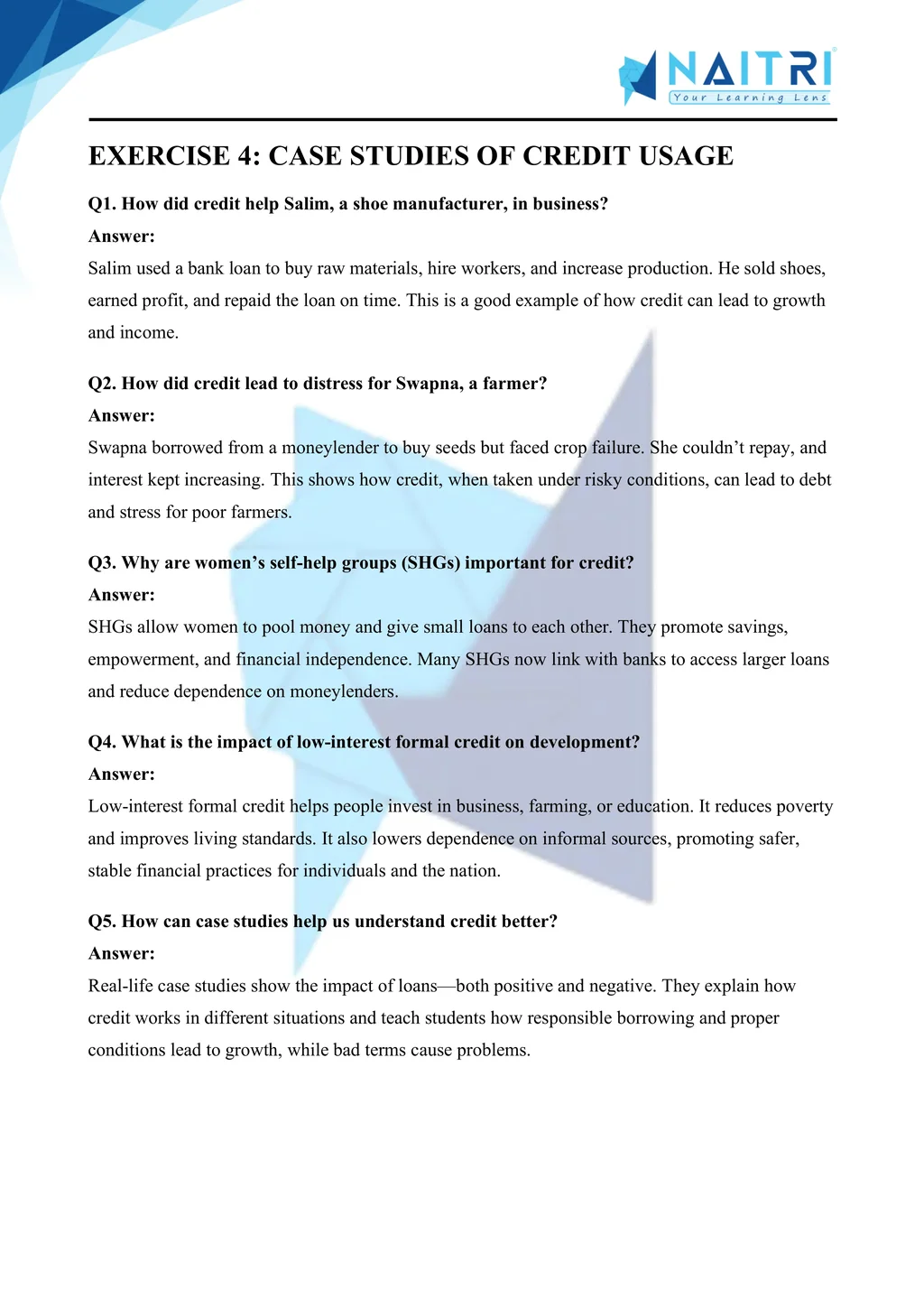
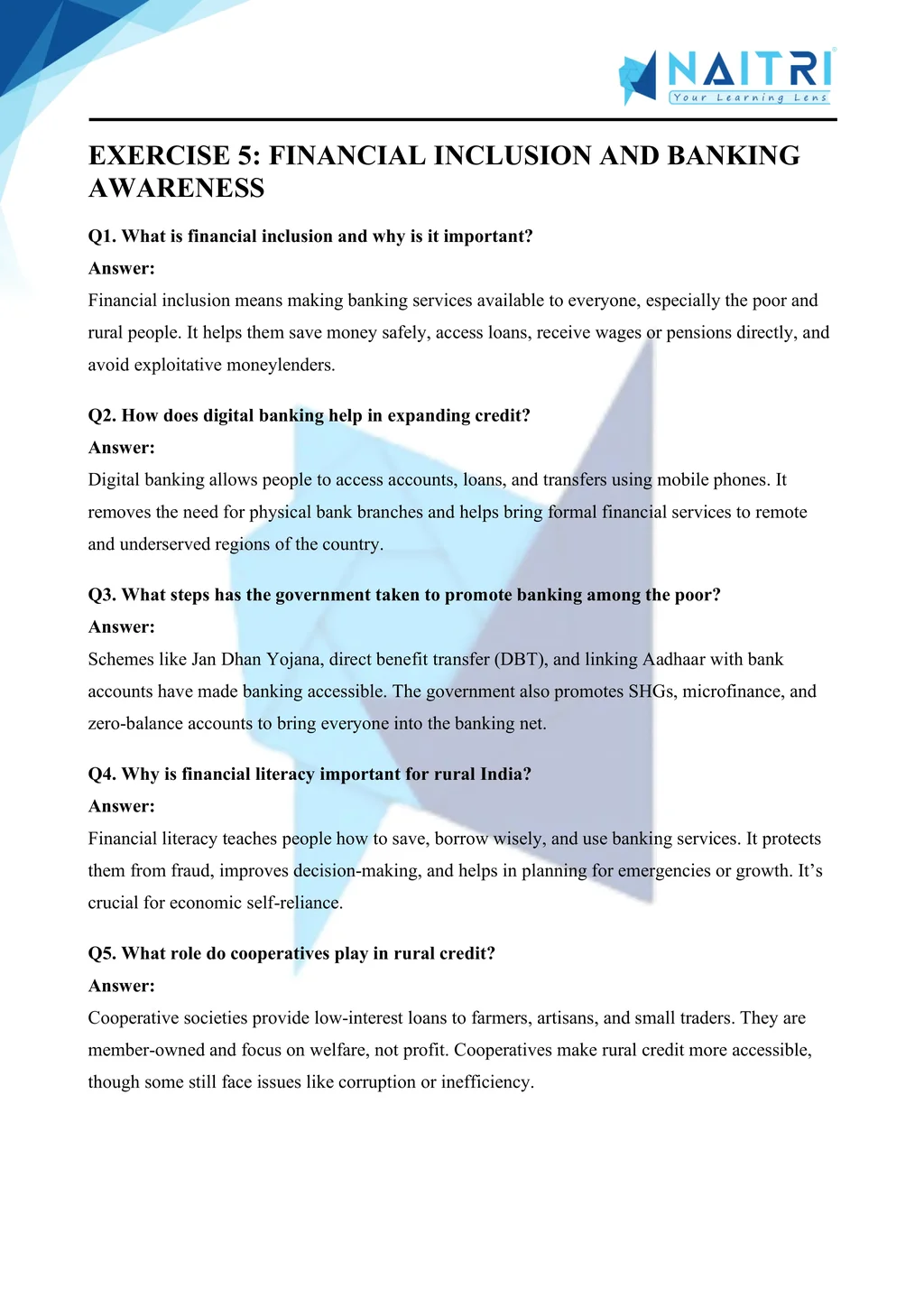
Experience Economics Like Never Before – With AR!
Understanding Money and Credit is now more exciting and immersive! With the NAITRI App, you can explore complex economics concepts through Augmented Reality (AR). Experience banks operate, loans disburse, and financial systems function — right in front of you. Our AR-powered lessons make learning interactive, 3D, and fun, helping you retain concepts better and enjoy every topic.



Visualize . Interact . Understand . The future of learning is here
Money and Credit – Important Questions with Answers
What is the modern form of money?
Answer: The modern form of money includes currency notes and coins issued by the government and bank deposits that can be withdrawn using cheques or digitally.What are the main features of modern currency?
Answer: Modern currency is authorized by the government, does not have intrinsic value, and is accepted as a medium of exchange across the country.Why is money called a medium of exchange?
Answer: Money is accepted by everyone for buying and selling goods and services, eliminating the need for barter and making transactions more efficient.What is a demand deposit?
Answer: Money deposited in banks that can be withdrawn on demand by the depositor using cheques or debit cards is called a demand deposit.What is a cheque?
Answer: A cheque is a written instruction to the bank to pay a specific amount from a person’s account to the person named in the cheque.How do demand deposits offer flexibility?
Answer: They act like money, can be used for payments, withdrawn anytime, and help people keep their money safe and accessible.What is credit?
Answer: Credit refers to a situation where the lender provides money or goods and services to the borrower with the promise of future payment.What is a loan?
Answer: A loan is a form of credit where an agreed amount is borrowed from a lender and repaid with interestwithin a fixed time period.What is collateral?
Answer: Collateral is an asset offered by the borrower as a guarantee to the lender in case the borrower fails to repay the loan.What is the difference between formal and informal credit?
Answer: Formal credit is given by banks and cooperatives and is regulated by law, while informal credit includes loans from moneylenders and relatives without legal supervision.Why are terms of credit important?
Answer: They include the interest rate, repayment time, collateral, and mode of repayment, all of which affect the cost and risk of borrowing.What are the sources of formal credit?
Answer: The main formal sources are commercial banks, cooperative societies, and financial institutions regulated by the RBI or government.Name two informal sources of credit.
Answer: Moneylenders and landlords are common informal sources, along with traders and relatives who lend money often at high interest rates.Why do poor people prefer informal credit sources?
Answer: Due to lack of documents, collateral, and low awareness, poor people often approach informal lenders despite high interest and unfair conditions.What are the advantages of formal credit?
Answer: It offers lower interest rates, is regulated by law, ensures transparency, and protects borrowers from exploitation.Why should formal credit be expanded in rural areas?
Answer: To reduce dependence on moneylenders, improve farming and rural businesses, and ensure fair borrowing opportunities for poor people.What is self-help group (SHG)?
Answer: SHGs are small groups of people, usually women, who pool savings, offer small loans, and promote self-reliance and collective empowerment.How do SHGs help in rural credit?
Answer: SHGs provide collateral-free loans, build savings habits, and later connect with banks to get bigger loans, reducing dependence on informal sources.What is the role of the Reserve Bank of India (RBI)?
Answer: The RBI regulates banks, controls interest rates, ensures safe banking practices, and maintains the monetary stability of the country.What are the functions of banks?
Answer: Banks accept deposits, give loans, enable digital payments, offer ATM and cheque services, and help in national development through financial services.How does credit help in development?
Answer: Productive use of credit helps people invest in education, business, agriculture, and housing, which boosts economic activity and income.What are the risks of credit?
Answer: If a borrower is unable to repay, it can lead to debt trap, loss of collateral, and even poverty or exploitation.What is meant by a debt trap?
Answer: A situation where a borrower cannot repay the loan and borrows more to pay the previous one, leading to rising debt and distress.Why is it important to have multiple sources of credit?
Answer: It increases competition, offers better terms, reduces monopoly of moneylenders, and ensures borrowers can choose affordable options.Summarise the role of money and credit in the economy.
Answer: Money enables smooth transactions, while credit helps in growth and investment. But credit must be regulated and fair to benefit everyone.
Money and Credit explains how money functions as a medium of exchange and how credit plays a key role in economic activities. Students learn about modern banking, types of credit (formal and informal), and how interest rates and collateral work. The chapter also covers the role of Self-Help Groups and financial inclusion. It helps students understand the importance of responsible borrowing and access to credit in development.
Download Naitri App
Easy, Visual Learning — Right on Your Phone
Learn with Augmented Reality! The Naitri app makes CBSE and MP Board concepts interactive and fun — even in low-resource settings. Watch lessons, complete homework, take tests, and track progress — all in one place. Anytime. Anywhere.
Available on








